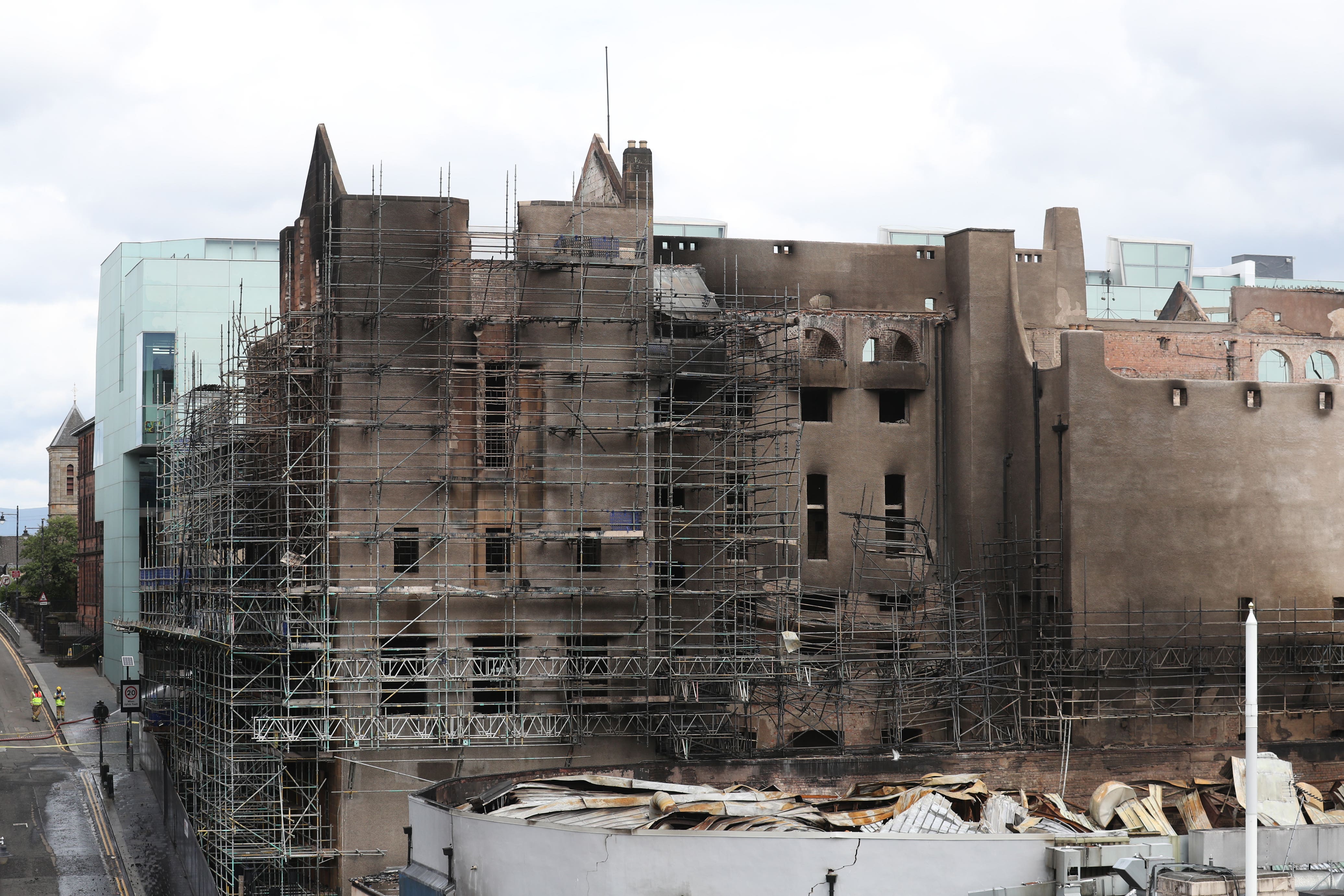First phase of preparation for Glasgow School of Art rebuild completed
More than 5,500 tonnes of fire-damaged material have been removed from the Mackintosh Building following the blaze more than four years ago.

Your support helps us to tell the story
This election is still a dead heat, according to most polls. In a fight with such wafer-thin margins, we need reporters on the ground talking to the people Trump and Harris are courting. Your support allows us to keep sending journalists to the story.
The Independent is trusted by 27 million Americans from across the entire political spectrum every month. Unlike many other quality news outlets, we choose not to lock you out of our reporting and analysis with paywalls. But quality journalism must still be paid for.
Help us keep bring these critical stories to light. Your support makes all the difference.
The first phase of physical preparation works for rebuilding Glasgow School of Art’s fire-damaged Mackintosh building has been completed, art school bosses have said.
The world-renowned building, designed by Charles Rennie Mackintosh, was extensively damaged when a blaze broke out late on June 15 2018 as it neared the end of a £35 million restoration project following a previous fire in May 2014.
A Scottish Fire and Rescue Service (SFRS) investigation was unable to establish how the 2018 blaze started and recorded the origin and cause as “undetermined”.
Following the completion of the SFRS investigation, Glasgow School of Art (GSA) carried out a meticulous stone by stone evaluation of what in the building could be retained and what should be taken down.
More than 5,500 of tonnes of fire-damaged material have been removed from the site.
Phase Two of the project, which includes enabling works for the faithful reinstatement of the building – the preferred option identified in the Strategic Outline Business Case (SOBC) in 2021 – is now under way.
GSA director Professor Penny Macbeth said: “Over the last two years we have been working in parallel on clearing and assessing the building and undertaking important preparation work for the rebuild including commissioning a Strategic Outline Business Case which identified faithful reinstatement as the most appropriate way forward for the building, and commencing the procurement of the three key teams, who will work with us on the rebuild.
“Our vision for the Mackintosh Building is that it will be home for a GSA Graduate School bringing together our postgraduate students with researchers from across the globe who are making world-leading, innovative work.
“We will also bring back to their original use key spaces such as the drawing studios, which will be timetabled for all students, recognising that drawing is already a distinctive and defining attribute of the GSA graduate.
“Partnership will be at the heart of the rebuild, and we will continue to collaborate with a wide range of people as we work to bring back this remarkable and inspirational building for our students and staff and a major resource for our community and for the city.”
She thanked the partners who have been working “tirelessly” on the building, including building contractor Reigart and structural engineers Narro Associates as well as thanking neighbours in the area.
In its report published in January last year, SFRS said that due to the extensive damage at the site and the fact physical evidence was destroyed in the fire, investigators were unable to determine what started the blaze.
Eleanor Magennis, GSA director of estates, said: “We are committed to reinstating the building through retention of as much of the original fabric as possible.
“The last year has seen us progress the huge task of assessing every part of the building whilst starting the key work streams for the faithful reinstatement.
“In the coming weeks we will begin the process of reinstating the internal structure, which supports the building, and construction of the temporary roof structure.
“Alongside these preparation works inside the building, an expert team has also been developing the strategic brief for the rebuild within the context of our overall Estates Strategy, central to which is a commitment to making a positive contribution to Garnethill and progressing our aim to achieve net zero.”
Subscribe to Independent Premium to bookmark this article
Want to bookmark your favourite articles and stories to read or reference later? Start your Independent Premium subscription today.